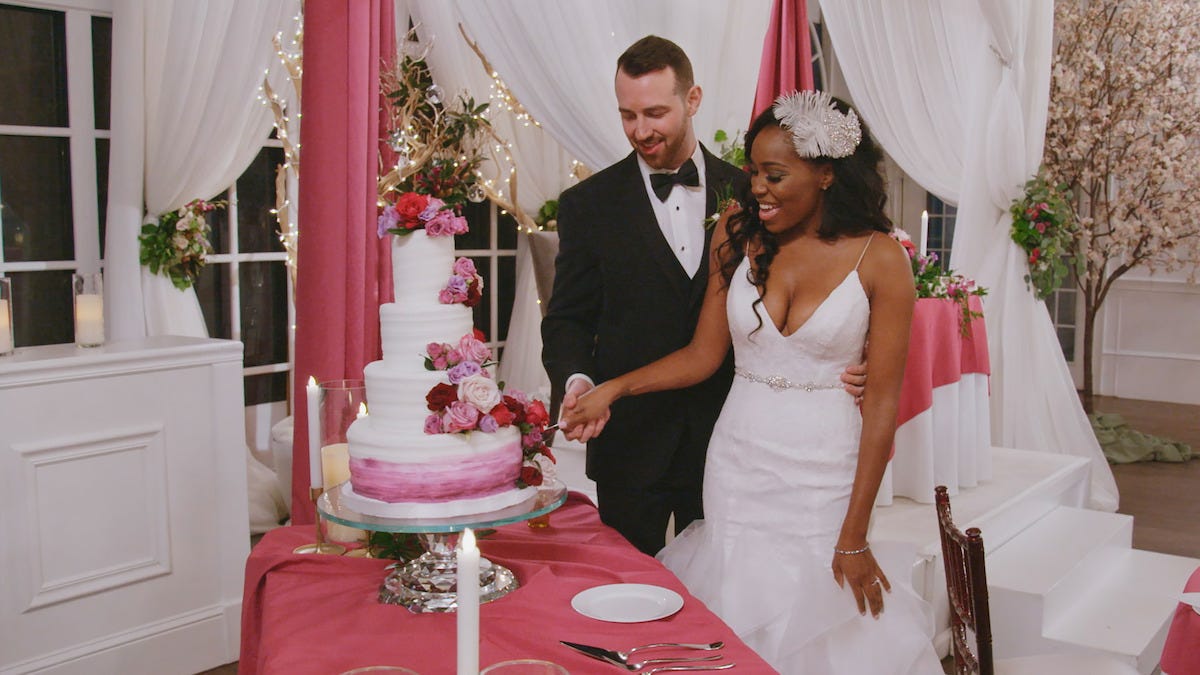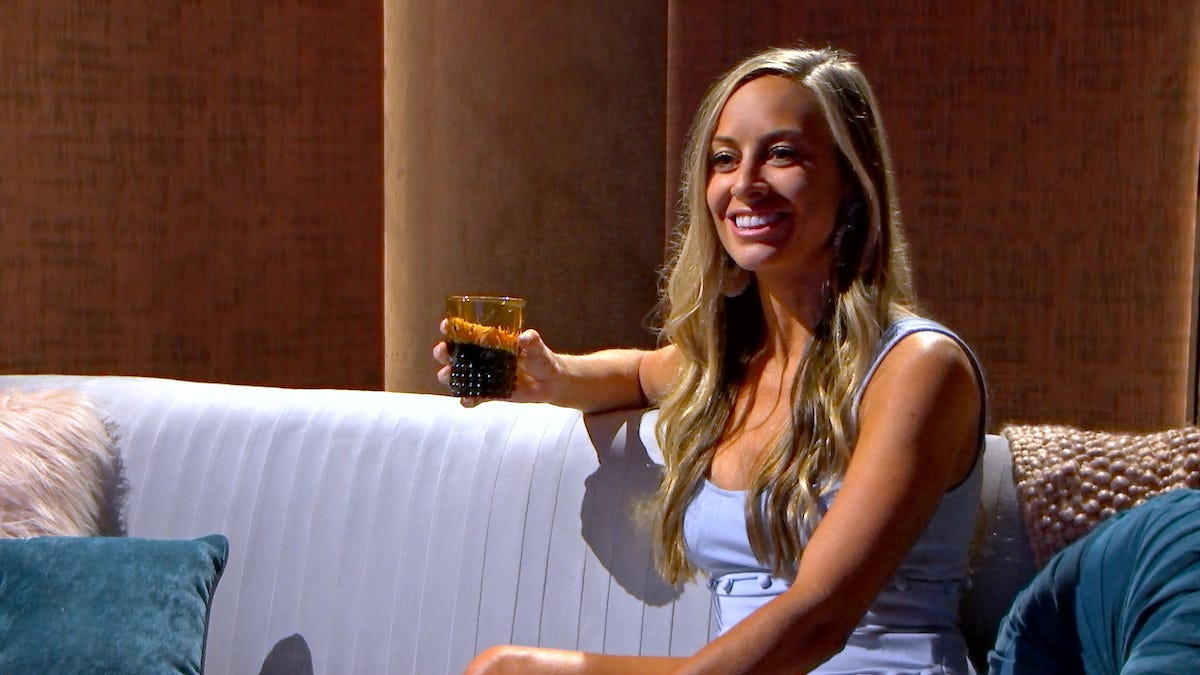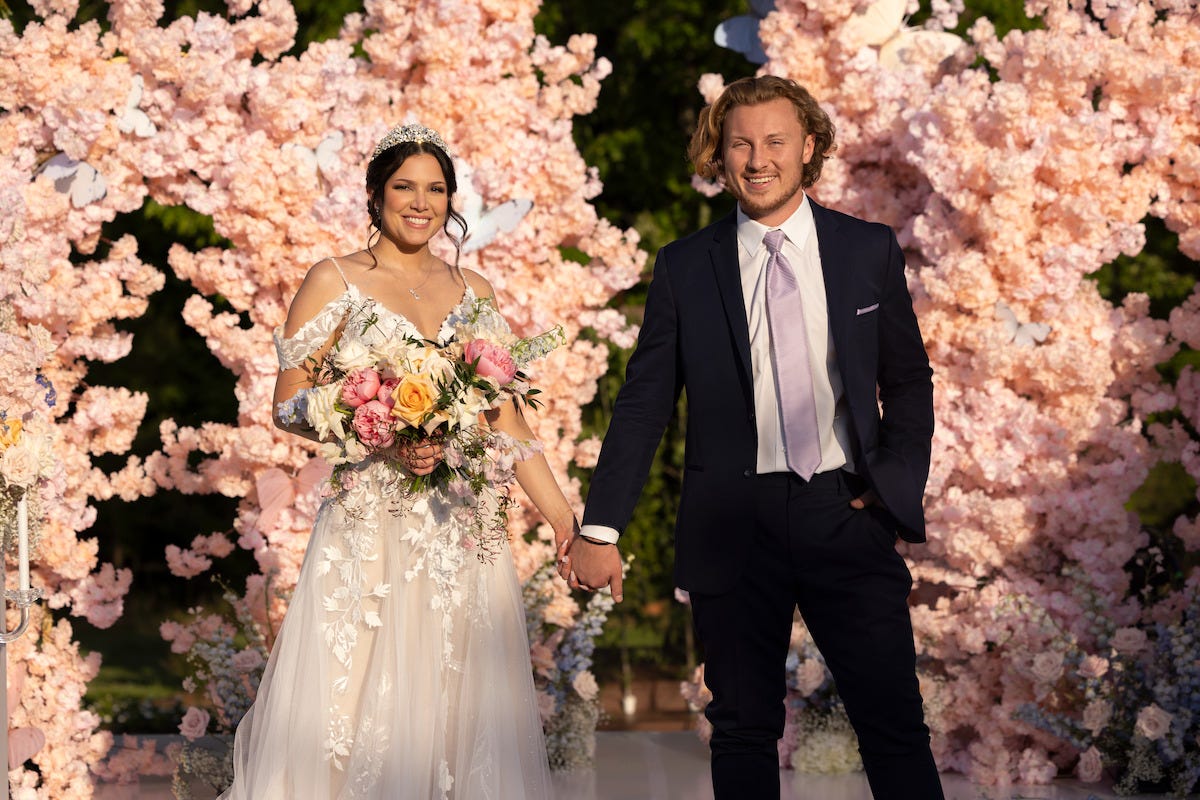Can You Predict If a'Love is Blind' Couple Will Get Married by the Editing Order?
Are a couple "safe" if their engagement is the first shown?
Yes, “Love is Blind” is about romance. But it’s also a guessing game where viewers try to suss out who will get married at the end. Every viewing party has a person who says, I knew it, I called it from the beginning. I very much like being that annoying person.
But how can you tell which couple is going to say “I do” in the show? Preview footage is often misleading, and social media can be unhelpful if you’re trying to infer which people are married because contestants are encouraged to not follow each other in case they spoil the show.
But what about editing tropes? After watching all of “Love is Blind, patterns have emerged. The show seems to hint at the final status of couples from the order by which engagements and weddings are aired.
Spoilers for all “Love is Blind” seasons! You’ve been warned.
Rule 1: You’re Safe If You’re the First (Or Last) to Be Engaged
Maybe it’s the Lauren and Cameron effect. They were the first couple to be engaged on the first episode of the show, and that’s colored my impression that if you’re the first couple to be shown engaged, you’re golden.
That, or be the last couple to be engaged. In “Love is Blind,” there is a tendency to bookend the engagements with successes, insofar as society considers legally binding one’s assets to another person a success. If more than one couple gets married in the season, the first and last engagements have historically culminated in both parties saying “I do.” If there is only one married couple at the end, then that couple’s engagement will be either shown first or last.
In season 1, the first couple is Lauren and Cameron; the last, Amber and Barnett. Both get married at the end. In season 2, the married couples are Danielle and Nick and Iyanna and Jarrette, respectively. Danielle and Nick’s engagement is shown as the first of their season, and Iyanna and Jarrette’s is last. Season 3’s first engagement is Alexa and Brennon, and the last engagement is between Matt and Colleen. Both couples said yes at the altar.
Season 4 shows a variation of the formula. Tiffany and Brett, who have inspired in the fandom a degree of love akin to Lauren and Cameron, were the first to be engaged. But while Zach and Irina were the last to be engaged in the pods, the two of them broke up in Mexico. Zach later proposed to Bliss after he returned to Seattle, making their engagement effectively the last engagement on the show. Both pairs—Tiffany and Brett and Zach and Bliss—tied the knot.
Unlike the first four seasons, season 5 and season 6 both ended with only one married couple. Against all odds (or just one odd called Uche), Lydia and Milton, whose engagement came last in season 5, ended up married. In season 6, Amy and Johnny were one of only two couples to make it to the wedding day and the only one to say yes at the altar. Their engagement was the first of their season.
The first and last engagement rule makes sense. “Love is Blind” might thrive on mess, but it lives and dies by the promise of finding genuine love. If the main point of this reality show experiment is to see whether people can fall in love with someone they’ve never seen before and then stay in love after meeting them in person, then having positive examples flank the engagement part of the process helps strengthen the legitimacy of the show’s premise.
That being said, this prediction rule seems to only hold true for the U.S. seasons. The international editions don’t all adhere to the same editing pattern. Neither the first nor last engagement of “Love is Blind: Japan” and “Love is Blind: Mexico” end in a marriage. Across the four seasons of “Love is Blind: Brazil,” the last engagement of each season has led to marriage, but not always the first engagement.
There are spin-offs, such as “Love is Blind: Sweden” and the more recent “Love is Blind: UK,” that do go by this rule. In particular, Nicole and Benaiah from “Love is Blind: UK” follow a very similar playbook to Zach and Bliss. After being caught in a fraught love triangle with Sam and Benaiah, Nicole gets engaged to Sam in the pods only to break it off soon after. She later becomes engaged to Benaiah when they meet in real life. Their engagement is the last of the season, and the two of them are married in the finale.
Rule 2: If You’re Featured in the First Pod Conversation, Strap in
The first pod conversation each season has a lot of heavy lifting to do. It’s supposed to help the viewers settle in with a new cast and grab their attention with the chemistry of a potential couple. In the case of the U.S. seasons, it also often serves as an introduction to a burgeoning love triangle.
It’s only after rewatching the show that I realized how much the groundwork of a love triangle narrative is carefully laid out by the editors from the very beginning. I had assumed before my rewatch that the first pod conversation we would be privy to each season would belong to the rock solid couple, such as a Lauren and Cameron or a Tiffany and Brett, a couple whose love for each other is so obvious that the question of them getting married is never a question of if, but a question of does the wedding suit fit.
How wrong I was. We begin season 1 of “Love is Blind” with a conversation between Jessica and Mark, two parts of the OG messy love triangle that is Jessica, Mark, and Barnett. Whether Jessica would chase after Barnett despite being engaged to Mark (bad decision) or get married to Mark (in hindsight, a worse decision) informed most of the dramatic tension of the season. So it’s telling that the first date between Jessica and Mark is what the editors chose to start the show with, and not with Lauren and Cameron.
In other seasons of “Love is Blind,” the first conversation similarly sets up a relationship between two cast members only to reveal its complications as the episode unfolds. For instance, season 2’s first conversation is between Iyanna and Jarrette. It then segues into a date between Jarrette and Mallory, the other part of the love triangle.
In season 6, the most recent U.S. season, Trevor and Chelsea’s conversation is the first that’s featured, and the sparks between them are apparent. But shortly after their date, we also see Chelsea interacting with Jimmy, whom she will also develop an attraction to and ultimately choose to be engaged to.
Why do the editors often choose to open a season with a couple who will become entangled in a love triangle? Part of it might be storytelling logistics. With more players involved in a story—sometimes it’s not just a love triangle you’re working with, but a love quadrangle or more—it takes time to set up the entirety of the relationship dynamics, so it makes sense to start off a season with parts of a love triangle and then slowly build up that narrative across the episode.
It can also be just for the drama of it all. By establishing chemistry between a potential couple at the onset of a show, only to then threaten that connection with another romantic interest, the editing generates immediate conflict that helps get the viewers hooked. Love triangles keep things interesting by presenting a problem that has to be solved, a choice to be made. And as much as we love watching our steady couples head toward marriage without incident, we also need our stakes. Because if we’re not worried about the outcomes of some couples on “Love is Blind,” are we really, truly invested? A little uncertainty goes a long way.
Similar to the first and last engagement theory, the “first pod conversation spells trouble ahead” rule applies more neatly to the U.S. seasons. The international spinoffs might choose to tell their stories differently. In “Love is Blind: Japan,” the first pod conversation centers around Odachi the comedian, arguably the most outgoing of the male cast, and his various interactions with different female cast members before honing in on his conversation with Nanako, whom he’ll eventually get engaged to. Their romance doesn’t feature a love triangle, but it feels like editors chose to open with his story to bring a level of levity and entertainment into the inaugural episode.
“Love is Blind: UK,” on the other hand, seems to cleave to the U.S. format more closely in its opening. The first pod conversation of “Love is Blind: UK” is between Freddie and Cat, but then it transitions into a conversation between Cat and Ollie, whom Cat is also interested in. The obstacles to a relationship are set up right from the start, before the editing’s focus shifts to Sabrina and Steven, the steady couple whose engagement concludes the first episode.
Rule No.3: You’re Safe if Your Wedding Comes Last
But if there’s one commonality that unites nearly all of the “Love is Blind” editions, it’s that if a couple’s wedding—or at least the part of the wedding where it’s revealed if they’re saying yes or no—is the last to be shown on the show, then that couple is going to say yes.
It’s applied to all of six of the U.S. seasons. In season 1, Lauren and Cameron’s wedding is shown last. Season 2, it’s Iyanna and Jarrette; season 3, Colleen and Matt. Zach and Bliss’s wedding cap off season 4, Lyanne Wombat song and all. Season 5 and 6 each only have one married couple at the end—Lydia and Milton and Amy and Johnny, respectively—and their weddings are both aired as the last one, a hopeful ending to otherwise largely bleak seasons where many couples broke off their engagements before the wedding day.
Maybe it’s the determination to end the experiment on a hopeful note that leads to the choice to finish the season with a marriage. It’s a pattern followed by nearly all of the international spinoffs, except for “Love is Blind: UK,” which recently wrapped up its season with its shakiest couple, Cat and Freddie, rather than the weddings of the two couples who got married, Sabrina and Steven and Jasmine and Bobby.
However, it’s a predilection that reigns strong in the franchise to the point of being almost cardinal rule. Through all four seasons of “Love is Blind: Brazil,” the last wedding has ended in a marriage; “Japan,” “Mexico,” and “Sweden” have concluded their shows with a successful wedding as well.
Not to say that I don’t go into every last wedding of a “Love is Blind” season still with some trepidation. As “Love is Blind: UK” proved, the show can switch up the formula anytime they want to so that viewers don’t feel too secure in their predictions. And in the case of the U.S. “Love is Blind,” many a last wedding has been with couples whose fates are far from certain. Season 2’s Iyanna and Jarrette weren’t a sure deal right up until the moment when they both said yes. And neither were season 4’s Zach and Bliss and season 5’s Lydia and Milton. But maybe that’s “Love is Blind” in a nutshell. Even with editing conventions on your side, you’re still kept on your toes.








